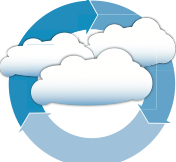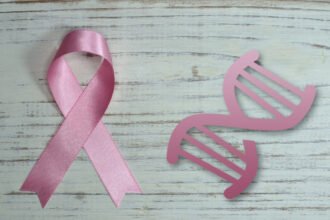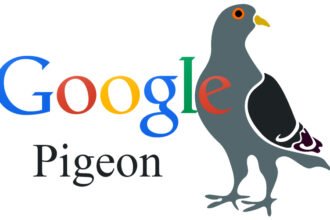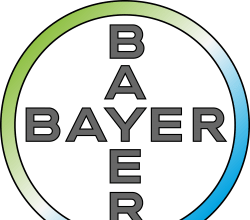
I was chatting with a friend the other day about how to get people’s attention in this information-overload age, and we decided that the use of buzz words was a critical component of success. So I decided to test this catchy title and see if it leads to any more reader traffic than I usually get.

I was chatting with a friend the other day about how to get people’s attention in this information-overload age, and we decided that the use of buzz words was a critical component of success. So I decided to test this catchy title and see if it leads to any more reader traffic than I usually get.
Really, I’m not messing with you. There is something to the idea of buzz word use in our search engine optimized world, but as I reflected on these three technology trends, I thought it worth pausing for a moment to reflect on just how game-changing each is for those of us in the connected health space.
Wireless/Mobile
Of all the top-of-the-hype-cycle buzz words in health care right now, mobile tops the list. And while we probably can’t cure cancer, reverse aging and find the true meaning of life with mobile technology, it really has revolutionized the world of healthcare.
The key features that are so exciting are the miniaturized computing capabilities in mobile devices combined with their always on, always connected state. Those of us who grew up espousing the vision of telehealth now have no excuse (from a technology perspective anyway). We can videoconference from our iPads over 4G networks, or use our smartphones as data-collection hubs for remotely monitored sensor data about our patients. We can message our patients in the moment when it’s most needed. With mobile technology, we have the infrastructure to deliver on the promise of connected health: using objective information derived from patients to provide insights that lead to improved self-care, as well as the opportunity to deliver care in the moment or continuously. Both of these strategies have been shown to improve quality and lower costs, particularly when applied to chronic illnesses such as diabetes, hypertension and congestive heart failure.
Big Data
This is the newest of our buzz words, but the healthcare implications are huge and exciting. The term Big Data is a colloquialism referring to the power of collecting and analyzing large data sets. The companies that provide storage and super-computing services are salivating at the opportunities to bring this technology to healthcare.
Three trends suggest that they are sniffing at a real opportunity:
- The first is the decreasing cost of genetic sequencing (now around $1000 and falling fast) combined with the exciting results we’ve seen when genetic information has been used to target therapeutic interventions in certain cancers. The era of personalized medicine is near at hand. The computational power and storage needed to make genetic mapping part of an individual’s standard health information (the same way we all know our cholesterol level today) are staggering. But the precision that genetic data affords will allow us to diagnose, prognosticate and recommend therapeutic interventions as never before.
- The second trend is the rise in consumer connected health and its intersection with the power of wireless. Personal health measurement devices abound (FitBit, Withings, Zeo, etc.), each making their data easily available via wireless networking. The tendency is to publish open APIs so the data from these devices can be captured and analyzed, yielding insights into consumer behavior. This is the cornerstone of the improved self-care value proposition of connected health. This data collection and sharing will enable us to create phenotypic maps that are as unique and precise as the genotypic maps noted above. Applying these data sets on individual and population levels represents an enormous opportunity for the Big Data folks.
- The third trend is the movement of bundled provider payment or global payments, otherwise known as the movement to Accountable Care. Providers are waking up to the notion that organizations need to create highly individualized/segmented programs and interventions that enable efficient, but compassionate care and promote patient affinity and loyalty. Once again, the opportunity here for data storage and analytics is huge.
The Cloud
Of all of our overused buzz words, this one seems to be the most ubiquitous in consumer advertising these days (possibly tied with mobile). What does the Cloud really mean and what are the implications for healthcare? Simply put, Cloud computing involves giant banks of connected computers that can handle multiple software applications and data storage at once. Up until recently, sharing software applications or storing data was inefficient and had several downsides. Then, a few years back, someone developed software that would enable you to spread your application and storage across many networked devices. This led to much more efficient computing. All servers are efficient, operating at capacity. If an organization needs more computing power, it’s easy to immediately order more. Lastly if one computer breaks no one really notices because the load is balanced by others.
The implications for healthcare? Both the power of mobile and the power of Big Data could not be achieved without the added innovation of cloud computing. Storage of information in the cloud and access on mobile devices allows for those devices to truly be windows into the world of information (ever notice how ‘dumb’ your iPad seems when it’s not connected to the Internet?). All of that Big Data is stored in the Cloud. These three innovations rely on one another for success.
It’s an exciting time. Although the buzz word Bingo surrounding these three concepts is slightly annoying, the applications for healthcare are truly amazing. Healthcare needs to be revolutionized and these technologies provide a critical substrate.
photo:AlexAranda/shutterstock
![]()










